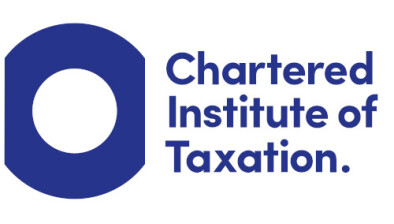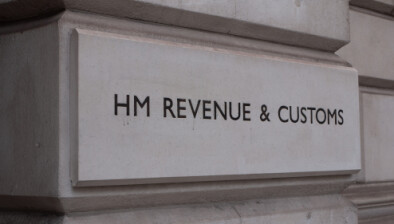CIOT: Tax Gap ticks back up – no sign of MTD impact

‘Tax Gap’ figures published today by the Chartered Institute of Taxation (CIOT) have revealed the gap increasing in both absolute terms and as a share of the tax that should be collected, after five years when the latter figure fell.
The tax gap is the difference between the amount of tax that should, in theory, be paid to HMRC, and what is actually paid.
Today’s HMRC report looks at the estimated tax gap in 2019-20. The report puts the tax gap at an estimated £35 billion, which is 5.3% of tax liabilities. It was 5.0% in 2018-19, though it had proportionately fallen for the previous five years, from 7.1% in 2013-14.
Today’s figures cover the first year of ‘Making Tax Digital’ (MTD), when compulsory digital record keeping and quarterly digital reporting for VAT were introduced by HMRC. HMRC stated that this would ‘reduce the amount of tax lost to avoidable errors’. However the amount of tax lost to both error and ‘failure to take reasonable care’ has increased significantly in the latest figures, as has the overall ‘VAT gap’ estimate.
John Barnett, chair of CIOT’s technical policy and oversight committee, said: “After five consecutive years of a falling rate of tax gap, the slight uptick in 2019-20 can be seen as disappointing. However, the tax gap figures are always imprecise – last year’s numbers have themselves been revised upwards by a similar amount – so it would be wrong to read too much into this small increase at this stage.
“The figures suggest HMRC is still collecting about 95% of tax due, which compares well internationally.”
The report puts tax lost due to taxpayers’ failure to take reasonable care in 2019-20 at £6.7bn (1.0% of total theoretical liability) and tax lost due to taxpayer error at £3.7bn (0.5%). The figures are up from £6.1bn (0.9%) and £3.1bn (0.4%) respectively in 2018-19.
John Barnett commented: “The findings in this report illustrate the complexity of the tax system. More than £10bn of the tax gap relates to taxpayers not getting things right through what HMRC categorise as error or a failure to take reasonable care.
“Whilst we recognise that we are in the early days of Making Tax Digital (MTD) and the published tax gap data doesn’t allow a granular analysis, we are surprised to see such a significant increase in these elements of the tax gap. MTD is supposed to reduce the tax lost from these behaviours and bring in hundreds of millions of pounds of additional revenue. So far there is no clear sign that this is happening.
“These figures back up what CIOT have heard from our members – that Making Tax Digital is unlikely to reduce the amount of taxpayer error and may even in some situations be increasing it.
“The theory behind digitalisation of the tax system is sound – and experience during the coronavirus has shown its merits. But HMRC must thoroughly assess the effectiveness of MTD, as well as whether the administrative burden it is imposing on business is reasonable, before they expand it further.
“Ministers must also stay focused on the need for simplification – a simple tax system, with clear rules and easy to navigate guidance will lead to fewer mistakes by both taxpayers and tax authorities.
“This is particularly true for small businesses. According to HMRC’s figures, small businesses account for over 40 per cent of the tax gap - though many of these are yet to be mandated into the MTD system.”
The report puts tax lost due to ‘legal interpretation’ in 2019-20 at £5.8bn(0.9% of total theoretical liability). This is up from £5.0bn (0.8%) in 2018-19.
The report puts tax lost due to evasion in 2019-20 at £5.5bn (0.8% of total theoretical liability), tax lost due to criminal attacks on the tax system at £5.2bn (0.8%) and tax lost due to the hidden economy at £3.0 billion (0.4%).
Simultaneously, the report puts tax lost due to ‘non-payment’ (largely taxes written off as a result of insolvency) in 2019-20 at £4.0bn (0.6% of total theoretical liability). This is marginally down on 2018-19 (£4.1bn; 0.6% but up from £3.1bn (0.5% at the time) in 2015-16.
John Barnett commented: “Non-payment reflects in large part the state of the economy, rather than anything HMRC can control. It increased sharply between 2006-7 and 2009-10, doubling both in absolute terms and as a share of the theoretical liability.
“These 2019-20 figures do not reflect the impact of the pandemic on business closures. The report includes an adjustment to account for tax payments deferred in March 2020 due to the pandemic. Next year’s presumably will do too. We will probably have to wait a number of years for the full impact of the pandemic to become clear, as the government’s economic support measures are wound down and we find out how much of the tax deferred in 2020 will ultimately go unpaid due to business failure.
“Also worth noting is that the government introduced changes in last year’s Finance Bill to give HMRC a higher priority in recovering debt that businesses owe when they become insolvent. They have predicted these will cut the tax gap by £150-200 million a year in a typical year. This change took effect in December 2020 so should start to be visible in the next set of tax gap numbers.”






